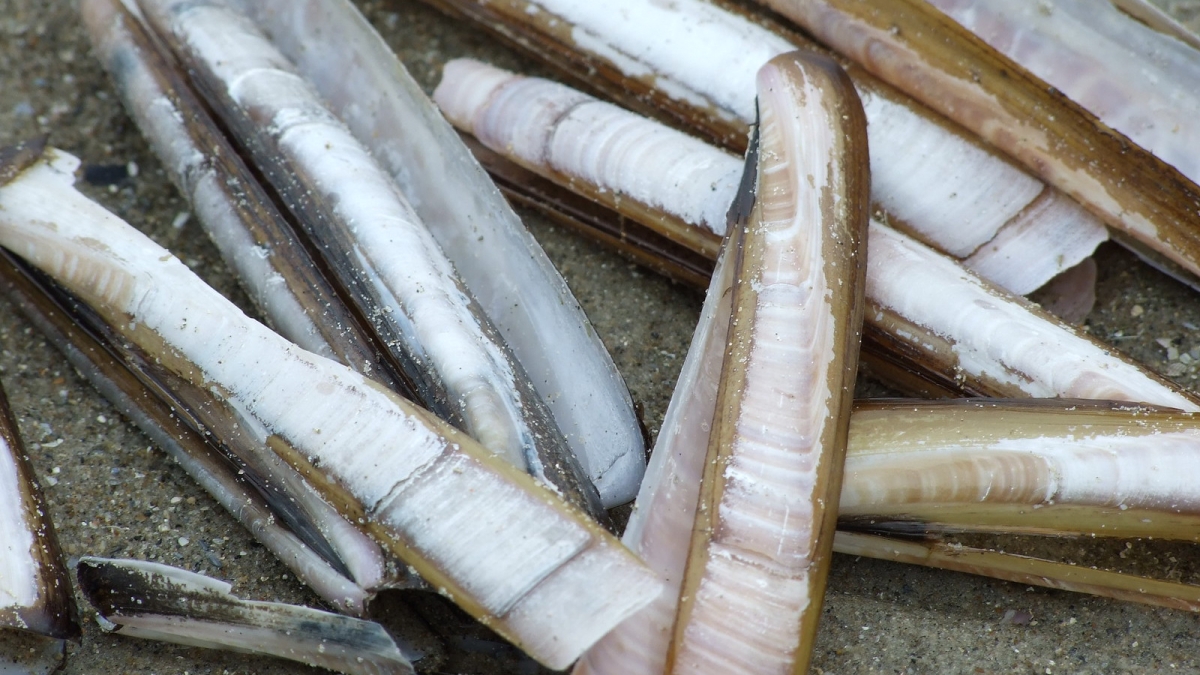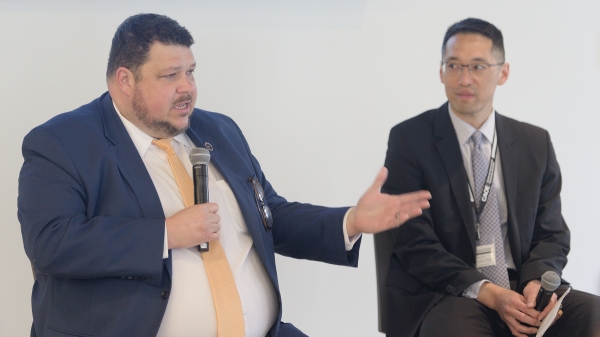Clamming up (and down, and sideways)
ASU engineer working on digging robots inspired by the motions of razor clams

As anyone who has ever used a shovel knows, the only way to dig is by using force. A bulldozer, an earthmover, a spade — they all involve force.
But many animals burrow because they live underground. And they don’t use force.
“Literally they are swimming in the soil,” said Arizona State University Associate Professor Junliang Tao, a geotechnical engineer by training who studies bioinspired mechanisms.
Enter the humble — but very effective — razor clam. Not one of nature’s loveliest creatures, except when it comes to digging, which they can do at a foot a minute. Pretty impressive, as any frustrated clam digger can tell you.
Tao is working on subsurface robots that move like razor clams. First, however, he has had to carefully study, measure and model how they do what they do. His most recent paper on the subject was recently published.
Tao became interested in bioinspired design while working on his PhD. His first project was a flow sensor inspired by fish. It piqued his background in geotechnical engineering.
“I was thinking, 'Is there any way I can combine these two ideas so I can learn from nature to improve the geotechnical practices?” he said.
He went to a robotics lecture at MIT where the lecturer talked about how animals burrow. Tao thought his geotechnical training could give him insights into burrowing.
His first paper — purely theoretical — used 50 year old data from biologists, looking at it from a geotechnical engineer’s perspective.
What’s the razor clam’s trick?
When a razor clam opens its shell, it increases the diameter. The surface area increases and the pressure increases. It extends its foot down, then pushes. Then it contracts, inflates its foot so it becomes an anchor, then pulls itself down.
“They are using one trick to do two functions,” Tao said. “They leverage the property of the soil to burrow.”
It works really well. They can dig about a foot a minute, depending on the texture of what they’re digging in.
But Tao wondered how they get back up after they’ve buried themselves. “They have to go up some way,” he said.
Turns out, those wily clams have a trick up their shell.
Tao and his team found out how it works by making a robot with a silicone tube surrounded by a sleeve of inextensible threads. By inflating and deflating the robot, it expanded and contracted, naturally pushing itself up.
“What this robot does is only push upwards and downwards,” Tao said.
As it climbs, the soil beneath it collapses and fills in the hole, giving the robot a new base on which to continue climbing.
“It’s much faster when it goes up,” he said.
Tao dug two razor clams from the beach in Rhode Island and brought them back to his lab in Arizona.
“When they go down, they have a very complex sequence of motion,” he said.
And it all only works in burrowing in granular material. It’s a spectacular display of evolution.
“If you do this in air or water, it will go nowhere,” Tao said. “They leverage the property of the soil. They know the soil, they know the material. They know how to leverage this to save energy. Maybe it’s active. Maybe it’s passive. I don’t know.”
Tao and his team have published both a technical abstract showing the robot can do what a clam can do and a paper in the journal Bioinspiration and Biomimetics.
“This is very new,” Tao said. “Scientifically it’s a good contribution.”
The robot is a fiber-reinforced silicon tube. They tested it in different types of soil, and with water added.
“Now we have a robot that can move,” he said.
Tao envisions robots like earthworms, which can move up, down, sideways, and at various angles. “This is our ultimate goal – to have maybe tens or hundreds of these small robots which carry sensors, power and communicating units. They can dig in different directions and measure things.”
Applications he envisions include site investigation, precision agriculture, search and rescue, smart construction, underground sensing or off-world exploration.
Top image courtesy of Flickr
More Science and technology

The science behind chronic stress
Stress comes in many shapes and sizes. There’s the everyday stress of preparing for a final exam or being stuck in traffic. And the more significant stress of losing a friend, family member,…

ASU planetary scientist to be inducted into the National Academy of Sciences
The National Academy of Sciences is inducting School of Earth and Space Exploration Director Meenakshi Wadhwa into the 2023 class of new members for her pioneering work in planetary sciences and…

Unlocking the potential of AI for homeland security
“Can we do what we're doing now cheaper, more efficiently, more effectively?” Adam Cox, director in the Office of Strategy and Policy at the Department of Homeland Security Science and Technology…